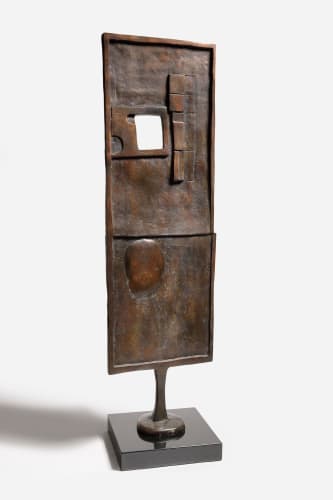Hubert Dalwood (1924–1976) was a prominent British sculptor known for his innovative contributions to modern sculpture during the mid-20th century. Dalwood pursued formal training at the Bath Academy of Art, where he studied sculpture under artists such as Kenneth Armitage and Bernard Meadows.
Dalwood's early work was influenced by the principles of modernism and abstraction, as well as the avant-garde ideas of the time. He experimented with a variety of materials and techniques, including wood, metal, and plaster, and developed a distinctive style characterised by its organic forms, dynamic compositions, and sense of movement.
In the 1950s and 1960s, Dalwood emerged as a leading figure in the British sculpture scene, participating in important exhibitions and collaborations with other artists. He was associated with the "Geometry of Fear" movement, a group of British sculptors known for their exploration of themes of anxiety, alienation, and the human condition in the aftermath of World War II.
Dalwood's sculptures often incorporated elements of nature and the environment, reflecting his interest in the relationship between man and the natural world. He was particularly interested in exploring the tension between order and chaos, creating works that challenged viewers to reconsider their perceptions of space, form, and material.
